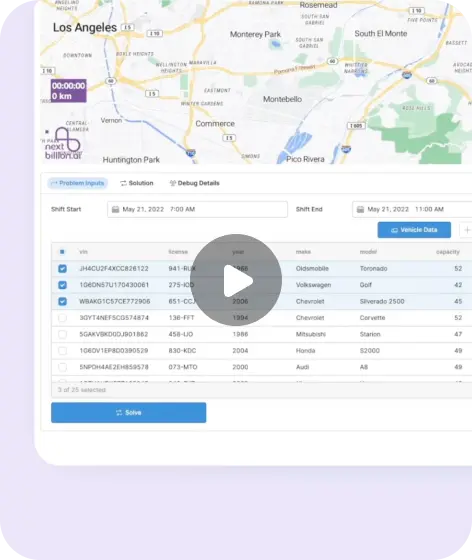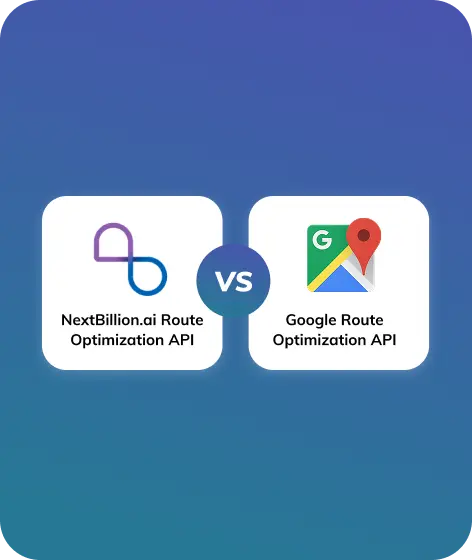
Table of Contents
Navigating expensive shipping in has become a critical challenge for businesses aiming to stay competitive in an increasingly globalized market. With rising fuel costs, supply chain disruptions, and evolving regulatory frameworks, shipping expenses continue to climb. To thrive in this landscape, companies must adopt smarter strategies like leveraging advanced logistics technology, optimizing shipping routes, and negotiating better carrier contracts. This guide delves into actionable solutions to help businesses tackle expensive shipping, minimize costs, and enhance overall operational efficiency. Whether you’re a small e-commerce retailer or a global enterprise, these insights will empower you to adapt and succeed.
If you own a business and have recently placed shipping orders for your goods, you are aware of the rising shipping costs. The freight sector has observed a massive rise in prices in the last few years. According to a few reports, the shipping rate between the US and China has swooped up by 350% in the past few years, and between Asia and North America has increased to 50% compared to the past year.
However, why is shipping so expensive in 2025, and how can companies mitigate these costs? After the COVID-19 pandemic, the world economy took time to scale and return to normal. However, the pandemic had a lasting impact on the shipping sector.
While nations are still struggling to cope with the deadly effects, several other factors have also arisen that greatly affect shipping costs. The ongoing scenarios in the world, including the Red Sea attacks, past pandemic effects, wars, and weather conditions, have had an immense impact on the shipping trade globally.
Every factor plays a significant role in influencing shipping costs, and in this article, we will understand the reasons behind the increases. It is said that to resolve a particular problem, it is essential to understand its root cause. We will also look into strategies to reduce the impact of rising freight costs on your business.
Significant Reasons Why Shipping Is So Expensive

Here are some reasons that explain why shipping is becoming expensive day by day:
1. Massive Global Shipping Container Shortage
During COVID-19, the world entered a chaotic lockdown, which badly affected the manufacturing and caused supply chain disruption. Although China restructured its economy faster than Europe and the US, the shipping containers required to transport goods were stuck in the two countries.
This caused a massive shortage of shipping containers in China. Shipping companies spent immensely on new containers to recover the loss caused by COVID-19, but transport and shipping agencies are again struggling to find containers.
The demand for shipping containers has surged, and their prices are also touching the skies. Experts claim that the recent Houthi attacks can also be one reason behind the shortage.
It is a supply-and-demand issue. The increased demand for physical goods and China’s rapidly growing export market have caused a shipping container shortage, making shipping transport more expensive.
The Wall Street Journal states that 60% of the global container shipments were delayed in March. Besides, the shipping rates from China to the US have surged to 228% compared to last year. Experts call this shipping container shortage the Achilles heel because a single point of failure can have rippling effects and lead to widespread disruptions across global trade and supply chains.
2. High Costs of Transportation
A significant factor in increased freight costs is the geopolitical fluctuations near the Red Sea. The regional conflicts have caused route diversions, extending transit times, fuel consumption, and operational costs.
The shipping industry is also experiencing economic chaos, such as inflation and changing consumer behavior. This has greatly affected logistical requirements and global trade structures. As companies try to cope with the evolving shifts, freight rates are surging higher.
Experts also claim that US sanctions on Chinese imports have disrupted global supply chains and trade patterns, raising transport rates. Freight rates also vary depending on factors such as the distance, type of goods, availability of containers, and increased fuel prices.
3. Unavailable Commodities
Most of the time, the commodities utilized as raw materials for end-products are carried through sea by cargo ships. The rise in the demand for commodities impacts the demand for shipping transport, thereby affecting freight costs.
After the COVID-19 pandemic, countries worldwide have started manufacturing products to cope with future challenges and emergencies. However, raw materials rarely exist in the same region where the final product is developed, especially in developing countries. This has drastically increased the transport of commodities domestically and internationally.
Experts say that because of insufficient cargo ships and shipping containers, the raw materials do not reach proper buyers. Also, some regions restrict the export and import of necessary commodities, limiting their supplies to create the end-products. This has caused a massive increase in commodity prices and has directly affected shipping expenses overall.
4. Varying Consumer Demands
Shipping expenses vary according to the time of year. While the majority of customers are home or busy spending time with their families, freight rates usually surge during vacations, festive seasons, and holidays. The prices might drop during normal functioning.
Consumer demands also vary according to the weather or seasonal changes. The labor, equipment, and other facilities required for shipping transport are very limited. Because of this, the increased demand for shipping services massively raises shipping costs. Businesses must understand this and prepare for these seasonal changes to manage shipping costs.
The eCommerce trade has observed a rapid surge in recent years, especially after the Covid pandemic. Whether it is digital products, clothes, groceries, or footwear – the rise in the demand for online purchases has significantly led to a rise in shipping prices. eCommerce platforms charge more to maintain a balance between supply chain expenses and orders.
5. Port Congestion & Service Charges
Port congestion is often a situation when a shipping port gets overcrowded, has insufficient space, or has multiple goods to handle. This causes delays in goods deliveries and increases shipping costs. Port congestion can also occur due to accidents, worker strikes, or managing disagreements.
An accident in March 2021 stuck a shipping vessel in the Suez Canal, blocking the entire waterway for several weeks. Roughly 12% of global trade passes through this Canal, and the accident caused delays that cost billions in trade. Ports already deal with cargo ship dispatches, overloading, etc., and such accidents burden freight rates even more. The Suez Canal incident blocked the way for bigger ships, causing massive delays.
Port congestion can be avoided with enough space, labor, and equipment. Port service charges, such as canal fees, freight dues, lighthouse fees, anchorage fees, sanitation expenses, and customs duties, also impact shipping charges and labor costs in shipping. The costs normally vary depending on the destination.
How Can Companies Manage Their Shipping Expenses?

With shipping costs rising, businesses must develop significant strategies to cope with changing times and overcome risks. Enterprises can choose different modes of transport, shift their manufacturing units, or provide in-house delivery services. While businesses cannot do much with regard to resolving the root cause of the increase in shipping expenses, here are some strategies that can help businesses to cope with expensive shipping.
1. Prefer Air Freight Options
Air freight is much faster than the ocean freight. While ocean cargo may take weeks to reach a destination, air cargo is capable of delivering within a few hours. Air freight provides flexibility, as you can select from several routes and carriers.
Besides, air freight is more secure and safe than ocean freight. It adheres to strict regulations, reducing the risk of theft, loss, or damage. It also has comparatively lower insurance claims and premiums and a low probability of accidents.
Air transport is also believed to retain the quality and freshness of goods. It is beneficial to use air transport for pharmaceuticals, electronics, and food commodities. It maintains the optimal humidity, temperature, and pressure required for goods in transit.
Air freight has a lower environmental impact. It can transport more goods in less time. It can greatly reduce overall energy consumption and dangerous emissions. It does not cause noise pollution, water pollution, or marine life disruption. Big brands like Tommy Hilfiger and Levi Strauss choose air freight to reduce their costs.
2. Shift your Manufacturing Location
Many countries are now trying to be self-reliant when it comes to manufacturing goods. They are opting for close-together locations, reducing the extra cost spent on transportation.
Shifting manufacturing hubs closer has helped several businesses operate independently, especially during global emergencies or pandemics. It has also helped save transportation costs and labor expenses and reduced the cost of commodities to some extent.
The ongoing wars, attacks, and weather conditions suggest that companies should avoid relying on only one region for their manufacturing needs and relocate their manufacturing hubs closer to avoid risks. Moving manufacturing units may lower the overall production cost, increase timely sales, and improve customer satisfaction.
3. Choose In-House or Self-Delivery Services
If you are a direct-to-customer business (D2C) and daily deal with multiple online orders, you can opt for self-delivery options to minimize your shipping expenses. If your production or manufacturing units are close by, consider providing in-house or self-delivery services to your customers.
An initial set-up for in-house delivery services will cost you more, but eventually, it will save you from spending additional money on increasing shipping prices. Also, considering that third-party logistics providers like FedEx are continuously raising their shipping costs, your in-house delivery services will benefit you in the long run.
Initially, it is difficult to shift to an in-house delivery model completely. Still, you can surely partner with on-demand courier services that will help you deliver products without much load. While collaborating with them, you can transform your working criteria to make a seamless transition to the self-delivery model.
The Future of Shipping Prices: What Does Future Holds?
Considering the factors such as geopolitical crises, the Red Sea attacks, bad weather conditions, or ongoing wars between countries, experts predict that shipping costs will not reduce anytime soon. Instead, studies say that ocean freight costs are continuously going to surge.
In the upcoming months, several big companies, including DHL and Evergreen, are planning to raise their shipping charges, thereby increasing the overall ocean freight rates locally and internationally. Previously, International shipping companies like Maersk and COSCO Shipping have already announced price hikes.
The chaotic increase in shipping costs affects foreign trade and also shows the standard of global trade activity. Geopolitical tensions and trade barriers still pose a threat to future improvements and recovery. Also, as consumer demands increase, companies are raising their prices to balance the supply and demand chains.
Local enterprises must adopt flexible strategies to handle fluctuations in transportation prices. Additionally, considering the freight chaos, businesses should shift to higher-value-added aspects to minimize the impact of fluctuations. Modifying profit margins is an important criterion for businesses to improve their ability to tackle the challenges.
How NextBillion.ai Can Help In Reducing Shipping Prices?

While the shipping is becoming expensive, it is essential to draw a line and cut down on all the unnecessary costs that reduces the profit margin. Improperly optimized delivery route leads to time and resources wastage. Hence, businesses should invest in reliable and top-notch route optimization APIs and SDKs that can empower the teams to create better route schedule that are more efficient, better, and shorter.
NextBillion.ai provides robust and reliable route optimization APIs and SDKs for enterprises to design systems that seamlessly handle people, vehicles, and goods.
We aim to create location technology that benefits businesses and industries of all sizes. Our goal is to build tailored enterprise-grade solutions that meet real business needs and solve business-specific use cases. We simplify operations for location-driven businesses. Our API-first platform prioritizes ease of use, customization, and seamless integration.
Today, many global businesses trust us, from Fortune 500 titans to disruptive startups. We offer the building blocks for success tailored to each unique workflow and industry.
- With NextBillion.ai, you can plan your product deliveries up to five weeks earlier. Our Route Optimization API allows you to schedule routes for all orders with a few clicks, entering your delivery address and requirements.
- NextBillion.ai’s Live Tracking feature provides you with live visibility of your driver’s location throughout the delivery of your orders. You can monitor your team’s activities or determine if they have encountered issues.
- We allow you to access Routing Customizations according to your workloads. With our smart application, you can ensure an equal workload allotment for each of your drivers.
- NextBillion.ai application features include Fleet Management, Middle-Mile delivery, and On-demand delivery to make real-time ETA calculations.
- We also support automated field service scheduling and efficient route planning with road restrictions.
From the customer’s end, NextBillion.ai allows to provide delivery proof that their product has arrived at the delivery address. It also provides a delivery window time ensures that delivery is done only at the customer-preferred hours. Besides, the customers receive real-time notifications informing them about the status and location of their ordered product.
Keeping the customers happy while lowering down the operations costs in important to succeed in this competitive business environment. Hence, request for a live demo of NextBillion.ai and see it in action, how it can help combat the increasing shipping expenses.
About Author
Bhavisha Bhatia
Bhavisha Bhatia is a Computer Science graduate with a passion for writing technical blogs that make complex technical concepts engaging and easy to understand. She is intrigued by the technological developments shaping the course of the world and the beautiful nature around us.







